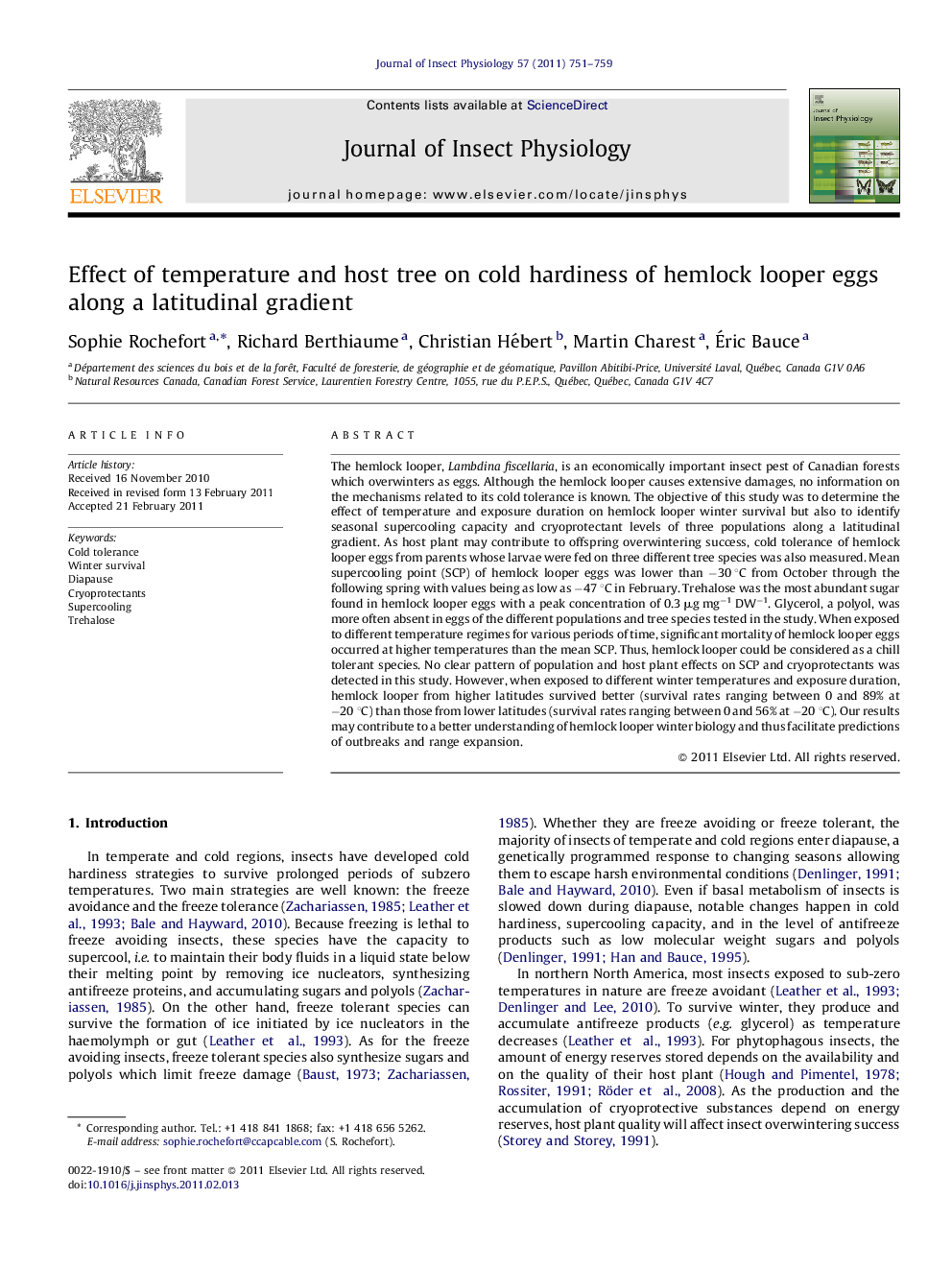| Article ID | Journal | Published Year | Pages | File Type |
|---|---|---|---|---|
| 5922213 | Journal of Insect Physiology | 2011 | 9 Pages |
The hemlock looper, Lambdina fiscellaria, is an economically important insect pest of Canadian forests which overwinters as eggs. Although the hemlock looper causes extensive damages, no information on the mechanisms related to its cold tolerance is known. The objective of this study was to determine the effect of temperature and exposure duration on hemlock looper winter survival but also to identify seasonal supercooling capacity and cryoprotectant levels of three populations along a latitudinal gradient. As host plant may contribute to offspring overwintering success, cold tolerance of hemlock looper eggs from parents whose larvae were fed on three different tree species was also measured. Mean supercooling point (SCP) of hemlock looper eggs was lower than â30 °C from October through the following spring with values being as low as â47 °C in February. Trehalose was the most abundant sugar found in hemlock looper eggs with a peak concentration of 0.3 μg mgâ1 DWâ1. Glycerol, a polyol, was more often absent in eggs of the different populations and tree species tested in the study. When exposed to different temperature regimes for various periods of time, significant mortality of hemlock looper eggs occurred at higher temperatures than the mean SCP. Thus, hemlock looper could be considered as a chill tolerant species. No clear pattern of population and host plant effects on SCP and cryoprotectants was detected in this study. However, when exposed to different winter temperatures and exposure duration, hemlock looper from higher latitudes survived better (survival rates ranging between 0 and 89% at â20 °C) than those from lower latitudes (survival rates ranging between 0 and 56% at â20 °C). Our results may contribute to a better understanding of hemlock looper winter biology and thus facilitate predictions of outbreaks and range expansion.
Graphical abstractSurvival rate of hemlock looper eggs exposed to different temperatures and periods of time.Download full-size imageHighlights⺠We compare cold hardiness of hemlock looper eggs reared on different host trees and coming from three populations. ⺠We measure supercooling points and cryoprotectants at 6 periods during winter time. ⺠Eggs were exposed to five different sub-zero temperatures and for four periods of time. ⺠Hemlock looper supercooling capacity is not in accordance with cryoprotectant levels as well as winter survival. Trehalose is the most abundant cryoprotectant measured. ⺠Significant effect of tree species and population is detected for winter survival.
